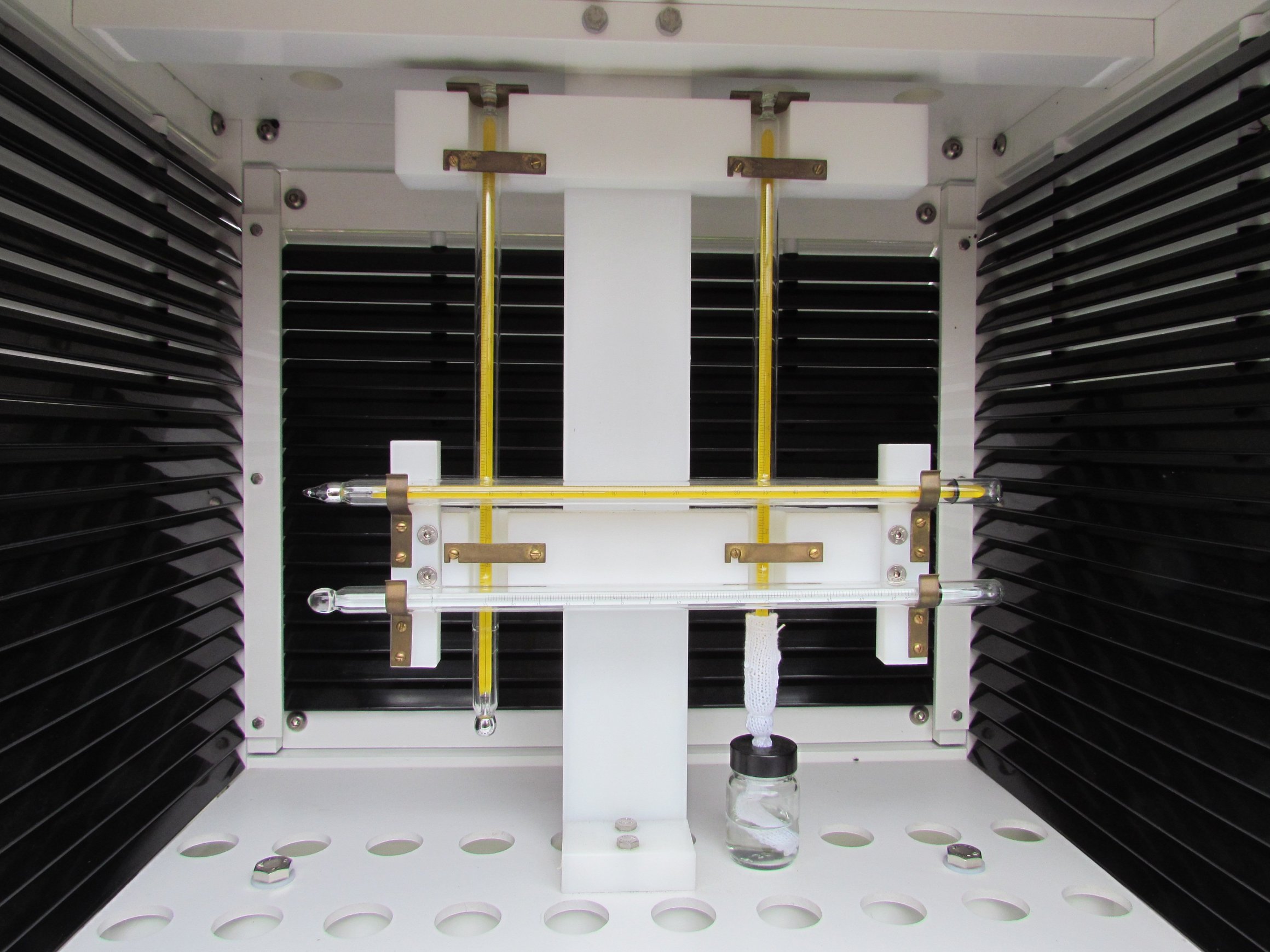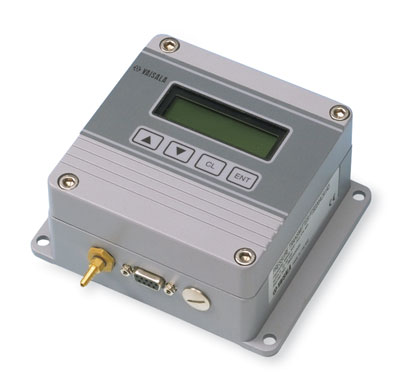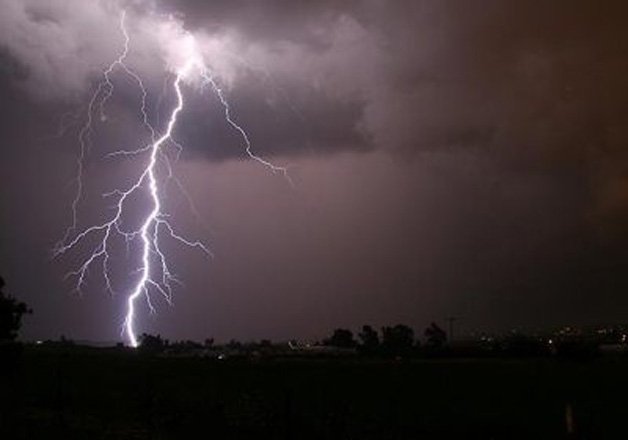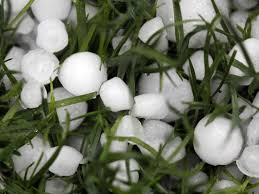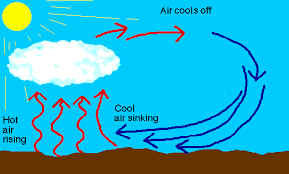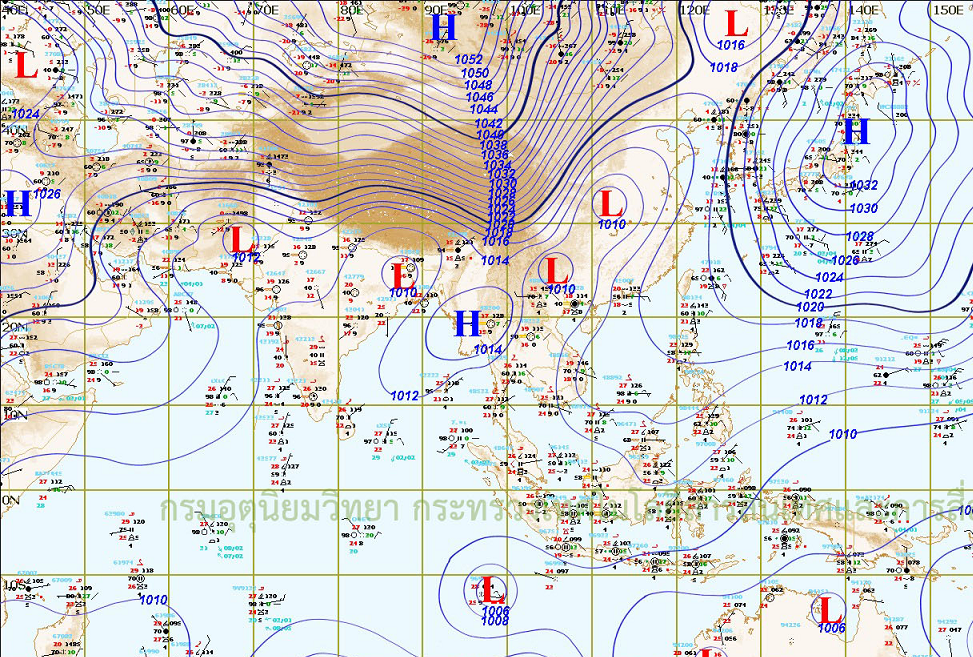Know Your Weather
Learn about the instruments and common weather terminologies used by forecaster in Brunei Darussalam Meterologoical Department.
Instruments
HMP45A & HMP45D Humidity and Temperature Probes
The HMP45A and HMP45D probes are designed for the measurement of relative humidity and temperature. Humidity measurement is based on the
capacitive thin film polymer sensor HUMICAP 180. Temperature measurement is based on resistive platinum sensors (Pt 100 and Pt 1000).
Both the humidity and temperature sensors are located at the tip of the probe and in standard version protected by a membrane filter.
The HMP45A and HMP45D have a similar humidity output, but the temperature output is active in HMP45A (voltage output 0-1V)
and passive in HMP45D (resistive output Pt 100).
Vaisala PTB220B Barometric Pressure Sensor
Fully compensated digital barometers designed to cover a wide range of environmental pressure and temperature. They can be used successfully both in accurate pressure measurement applications at room temperature and in demanding automatic weather station applications.The PTB220 series digital barometers use the BAROCAP silicon capacitive absolute sensor developed by Vaisala for barometric pressure measurement applications.
The measurement principle of the PTB220 series digital barometers is based on an advanced RC oscillator and three reference capacitors against which the capacitive pressure sensor and the capacitive temperature compensation sensor are continuously measured. The microprocessor of the barometer performs compensation for pressure linearity and temperature dependence.
The pressure and temperature adjustment in the PTB220 consists of seven temperature levels over the operating temperature range of the barometer and of six to eleven pressure levels over the operating pressure range of the barometer at each temperature level. The calculated individual basic pressure and temperature adjustment coefficients are stored in the EEPROM of each pressure transducer. The user cannot change these basic factory adjustments.
The multipoint fine adjustment for pressure and the final pressure calibration of the PTB220 Class A barometers is done using a manual Ruska 2465 dead-weight tester. The multipoint fine adjustment and calibration of the Class B barometers is done automatically using electronic working standards.
The PTB220 digital barometers use the BAROCAP silicon capacitive absolute pressure sensor developed by Vaisala for barometric pressure measurement applications. The BAROCAP sensor has excellent hysteresis and repeatability characteristics, low temperature dependence and a very good long-term stability. The ruggedness of the BAROCAP sensor is outstanding and the sensor is resistant to mechanical and thermal shocks.
Terms
A fluctuation in an atmospheric element (e.g. air temperature) over the course of a day, obtained by averaging observations over a sufficient length of time to remove all non-periodic variations.
Daily elements, such as temperature, rain and wind that can change hour by hour, or day by day.
An upgrade from Tropical Depression that occurs when cyclonic circulation becomes more organized and maximum sustained winds gust consistently at or above 62 km/h, and no higher than 117 km/h. Tropical storm status is when the naming of the storm takes place.
An area of low pressure, characterized by closed isobars (approximately), accompanied by cyclonic circulation with winds that spiral in towards the center, leading to convergence. Tropical depression forms when a low pressure area is accompanied by thunderstorms that produce a circular wind flow with maximum sustained winds below 62 km/h. Most tropical depressions have maximum sustained winds between 40 and 56 km/h.
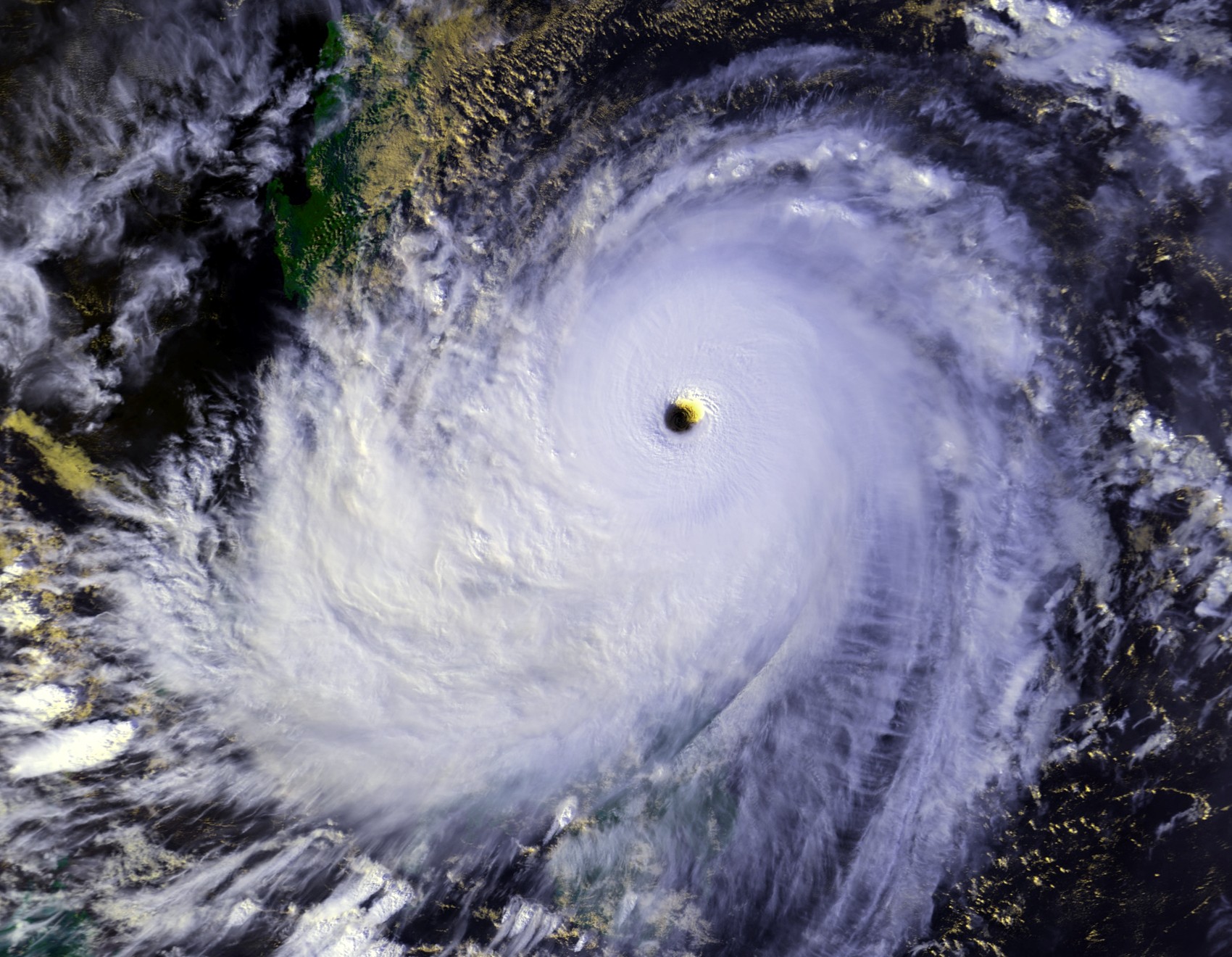 An upgrade from Tropical Storm that occurs when maximum sustained winds increase above 117 km/h. Tropical cyclone is defined as a non-frontal, synoptic-scale cyclone developing over tropical and sub-tropical waters at any level and having a definitely organised circulation. In other parts of the world, these are referred to as hurricanes, typhoons or simply tropical cyclones depending on the region.
An upgrade from Tropical Storm that occurs when maximum sustained winds increase above 117 km/h. Tropical cyclone is defined as a non-frontal, synoptic-scale cyclone developing over tropical and sub-tropical waters at any level and having a definitely organised circulation. In other parts of the world, these are referred to as hurricanes, typhoons or simply tropical cyclones depending on the region.
 1. A localised storm originating in a cumulonimbus cloud, with heavy downpours (sometimes with hail), gusty winds, lightning, and the associated thunder. It is not necessary for any rain to occur 2. In general, a local storm, invariably produced by a cumulonimbus cloud and always accompanied by lightning and thunder, usually with strong gusts of wind, heavy rain, and sometimes with hail.
1. A localised storm originating in a cumulonimbus cloud, with heavy downpours (sometimes with hail), gusty winds, lightning, and the associated thunder. It is not necessary for any rain to occur 2. In general, a local storm, invariably produced by a cumulonimbus cloud and always accompanied by lightning and thunder, usually with strong gusts of wind, heavy rain, and sometimes with hail.
An abrupt increase in pressure in an area, greater than any change that may be linked to a nearby anticyclone or depression. Such an increase may be produced by a *squall line or *mesoscale storm system.
1. In meteorology, liquid or solid precipitation from convective clouds (cumulonimbus or cumulus congestus) as distinct from stratiform (layer) clouds (nimbostratus, stratus). 2. Usually begin and end suddenly. Relatively short-lived, but may last about half an hour. Often, but not always, separated by blue sky.
Precipitation of liquid water drops greater than 0.5 mm in diameter. In contrast to showers, it is steadier and normally falls from stratiform (layer) cloud.
Liquid precipitation in the form of tiny water droplets, generally arising from stratus cloud.
1. SUNNY: Only less than 30% cloud coverage, or mostly high-level clouds.
2. PARTLY SUNNY: Between 3/8 and 5/8 of the sky is covered by clouds; term is only used during daylight hours.
3. PARTLY CLOUDY: a) Between 3/8 and 5/8 of the sky is covered by clouds. b) If used during daylight hours, Partly Cloudy suggests slightly more cloud cover than Partly Sunny.
4. CLOUDY: When 7/8 or more of the sky is covered by clouds.
5. OVERCAST: Sky completely covered with cloud.
1. Brief/Few: Short duration.
2. Intermittent: Precipitation that ceases at times.
3. Occasional: Precipitation that while not frequent, is recurrent.
4. Frequent: Showers occurring regularly and often.
5. Continuous: Precipitation that does not cease, or ceases only briefly.
6. Periods of Rain: Rain is expected to fall most of the time, but there will be breaks.
Precipitation occurring extensively throughout an area, of >50% cloud coverage.
a) Refers to the range of 30% to 50% coverage. So, even with "scattered" showers, half or less of the neighborhoods are expected to "get wet."
b) Irregularly distributed over an area. Showers that, while not widespread, can occur anywhere in an area. Implies a slightly greater incidence than isolated.
Precipitation occurring irregularly over an area.
a) Refers to range between 10% to 20% coverage. In other words, when the forecast calls for "isolated" showers, only 10% to 20% of the forecast area will receive measurable rainfall within the forecast period -most neighborhoods stay dry.
b) Showers that are well separated in space during a given period.
A sudden, short-lived increase in the wind speed relative to average speed at the time, and much shorter than a squall (*see definition). World Meteorological Organisation (WMO) standard defines a gust as the maximum wind speed exceeding the "mean speed" by 5 m/s (10 knots) during the 10-minute interval.
Synoptic scale (also know as large-scale weather system) in meteorology refers to weather system of the order of 1000 kilometers or more, e.g. tropical cyclones.
A region of relatively high atmospheric pressure, also known as a ‘high’.
An abrupt, sharp increase in wind speed that lasts for some minutes and then dies away.
A measure of the state of the Southern Oscillation. It is defined as the sea-level pressure at Tahiti in central Southern Pacific Ocean, minus that at Darwin in northern Australia.
In meteorology, it is generally taken to be the force exerted by the (hypothetical) column of air extending from the surface to the outer limit of the atmosphere and subject to the Earth’s gravitational attraction.
(from Greek “mesos” meaning middle): A prefix commonly used in meteorology to indicate that a phenomenon is intermediate in size, generally range from 5km to several kilometers. Examples of mesoscale weather system are sea breezes and squall lines.
The study of climate in all its aspects and of the phenomena associated with it.
The description of the variability of weather conditions prevailing in a particular region or latitude zone over a specific period of time (usually 30 years), as derived from statistical information about various meteorological elements.
Water in either liquid or solid form that is derived from the atmosphere and falls to the earth's surface.
The study and science of all aspects of the atmosphere, and thus including both weather and climate. It aims to understand the physical and chemical nature of the atmosphere, its dynamical behavior, and its complex interactions with the surface. It also includes both short- and long-term weather forecasting and the determination of past and future climate change.
Sky completely covered with clouds.
Phenomena
Wind shear refers to a change in wind speed or direction with height in the atmosphere.
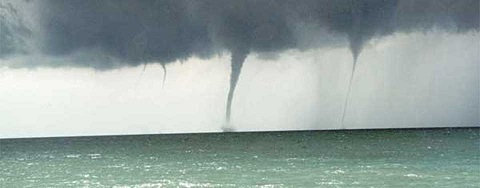
It is when the funnel* cloud develops over the surface of the water that is normally induced by stormy or thundery weather.
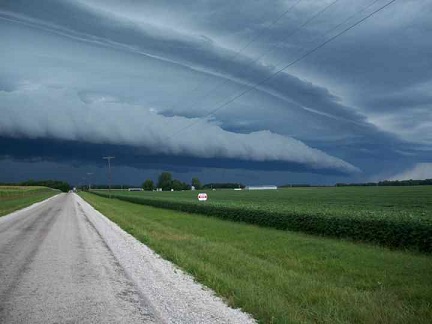
A line of organised thunderstorms that causes strong wind, together with the accompanying heavy precipitation, thunder and lightning.
It is derived from Arabic “mausim”: a wind that is persistent in direction throughout a season and also displays a pronounced change in direction from one season to another. The basic cause is strong differential heating of land and sea areas. Brunei Darussalam is influenced by “Northeast Monsoon” during Dec-March months, and “Southwest Monsoon” during Jun-Sept months.
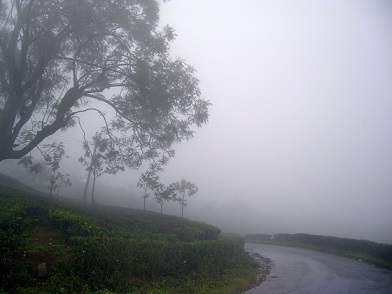
A suspension of small water droplets that slightly obscures visibility. Mist is reported when visibility exceeds 1 km; below that limit of obstruction would be classed as fog*. Obstruction by dry particles is defined as haze*.
A term for the “cold” phase of the *ENSO, and the counterpart to the *El-Niño phase. La-Niña phase is marked as the steeply sloping thermocline, giving deep warm water in the western Pacific and the up-welling of cold water off the coast of South America. La-Niña usually results in wetter conditions over Brunei Darussalam, as opposed to El Niño*.
Atmospheric obstruction by dry particles that are sufficiently small to remain suspended in the air for long periods and which give a pearly quality to the daylight. In Brunei Darussalam, hazy conditions usually arise from forest fires that happen either locally or over the neighbouring countries.
A gradual increase in the overall temperature of the earth's atmosphere generally attributed to the greenhouse effect caused by increased levels of carbon dioxide, chlorofluorocarbons, and other pollutants.
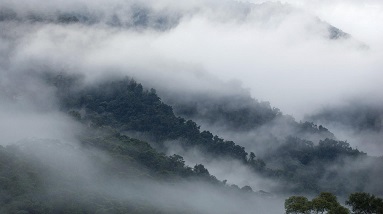
A visible suspension of water droplets in the atmosphere near the surface, and defined by international agreement as reducing visibility to less than 1 km (compare to "mist"). There is no physical distinction between fog and cloud, other than the fact that the base of clouds is above the surface of the ground.
A significant change in the climate of a region as shown by the trend in individual parameters such as temperature and rainfall as averaged over a decade or longer.

It is an atmospheric optical phenomenon in the form of a vertical column of light which appears to extend above and/or below a light source. is created by the reflection of light from numerous tiny ice crystals suspended in the atmosphere or clouds. The light can come from the Sun (usually when it is near or even below the horizon) in which case the phenomenon is called a sun pillar or solar pillar. It can also come from the Moon or from terrestrial sources such as streetlights.
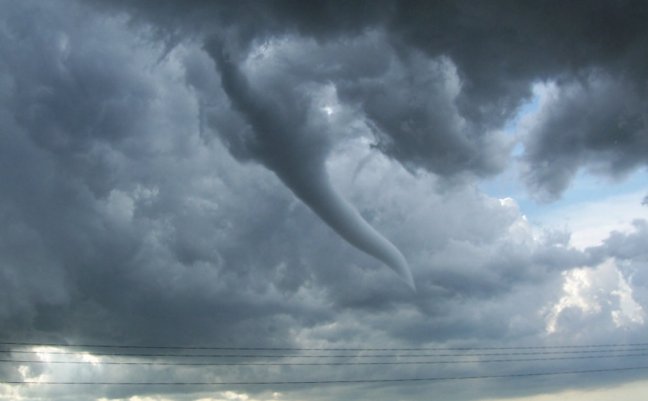
A weather phenomena where cloud of condensed water droplets, with a rotating column of wind and extending from the base of the cloud. Funnel cloud is visible as needle or cone-shape cloud.
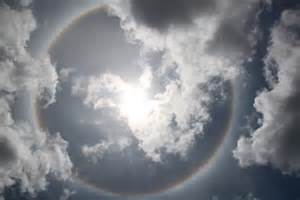
It is an optical phenomena produced by light interacting with ice crystals suspended in the atmosphere, resulting in wide variety of colored or white rings, arcs and spots in the sky. Many halos are near the Moon and Sun.
An irregularly occurring and complex series of climatic changes affecting the equatorial Pacific region and beyond every few years, characterized by the appearance of unusually warm, nutrient-poor water off northern Peru and Ecuador, typically in late December.
The coupled interactions between the ocean and atmosphere that occur in the ocean and atmosphere that occur in the tropical Pacific, now known to link what were once thought to be the separate phenomena of El Niño and the Southern Oscillation.

